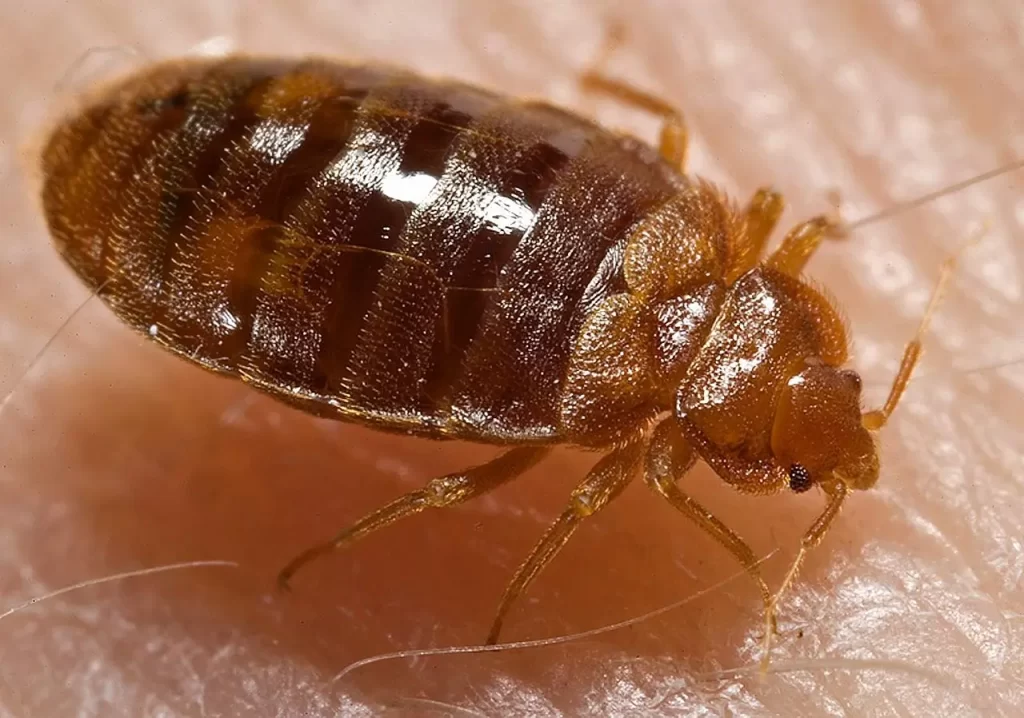Understanding Bed Bugs

The Latin name for bed bugs is Cimex lectularius. These small, parasitic insects primarily feed on the blood of humans and other warm-blooded animals. Measuring between 3/16 and 1/4 inch in length, They have a flat, oval-shaped body that is rusty brown in color. After feeding, they swell and become redder, making them more noticeable.
Historically, these pests were common in hotels, inns, and urban tenement housing. However, with the introduction of pesticides like DDT, their numbers significantly declined. Unfortunately, in recent years, they have made a comeback due to increased international travel, resistance to pesticides, and a rise in secondhand furniture sales.
Signs of Infestation
Identifying an infestation can be straightforward if you know what to look for. Common indicators include:
- Bloodstains: Small red spots on sheets or mattresses, often from them being crushed during the night.
- Fecal Spots: Tiny dark spots of excrement, yellowish-brown or black, found on bedding or in hiding spots.
- Eggs and Shells: The eggs are approximately 1/16 inch long and are often laid in clusters in hidden areas like mattress seams or furniture crevices.
Where to Find Bed Bugs
These insects typically inhabit areas close to their food sources. You can find them:
- Along the seams of mattresses and box springs
- In upholstered furniture and their coils
- Behind baseboards and picture frames
- In the cracks and crevices of walls and floors
Control and Prevention
Controlling an infestation requires diligence and a multi-faceted approach:
- Inspection: Regularly check your home, especially in bedrooms and areas where you have overnight guests.
- Cleaning: Wash and dry bedding, linens, and clothing at high temperatures. Vacuum frequently to remove any hidden bugs or eggs.
- Professional Treatment: If you suspect an infestation, it’s crucial to contact a pest control professional. They can provide targeted treatments that are more effective than over-the-counter solutions.
Preventing these pests is equally important. Consider using mattress encasements, reducing clutter, and being cautious when traveling or buying secondhand items.
If you suspect you have a problem, don’t hesitate to contact us. At Traffic Pest Solutions, we offer comprehensive pest control services tailored to eliminate bed bugs and ensure your home remains safe and comfortable. Let us help you reclaim your space from these unwanted pests. If you would like to tackle the problem yourself here is a DIY guide from the US EPA.
FAQ
- What are the signs of a bed bug infestation?
Signs of an infestation include small blood stains on sheets, dark spots of fecal matter on bedding or furniture, and the presence of live bed bugs, which are about 1/4 inch long and reddish-brown in color. - How do bed bugs spread from one location to another?
Bed bugs can easily spread through luggage, clothing, or used furniture, making them a common issue in hotels, public transportation, and shared living spaces. - Can I get rid of bed bugs on my own?
While DIY methods such as vacuuming, steam cleaning, and using specific insecticides can help, a professional pest control service is often necessary for complete eradication. - Are bed bugs harmful to my health?
They are not known to transmit diseases, but their bites can cause itching, allergic reactions, and secondary infections due to scratching. - What preventative measures can I take to avoid bed bugs?
To prevent bed bugs, regularly inspect your bedding and furniture, use protective mattress encasements, avoid bringing in used furniture without inspection, and be cautious when traveling by keeping luggage off the floor.
